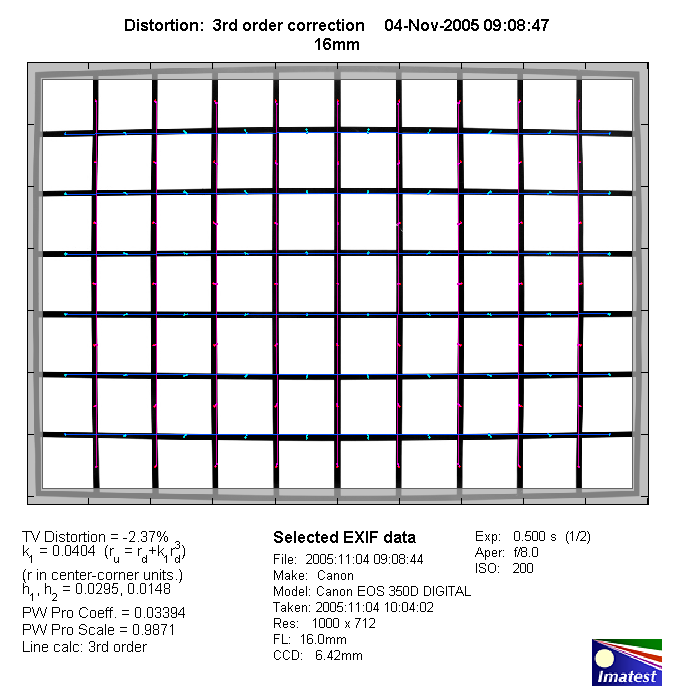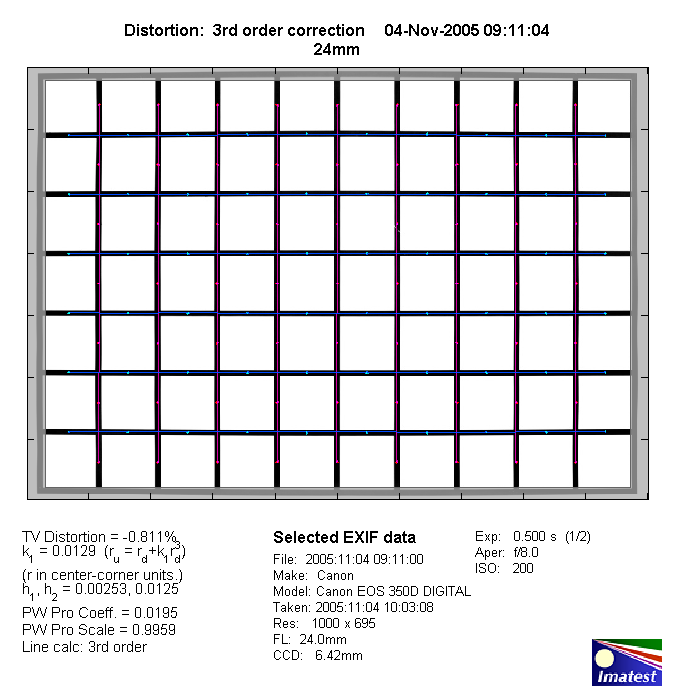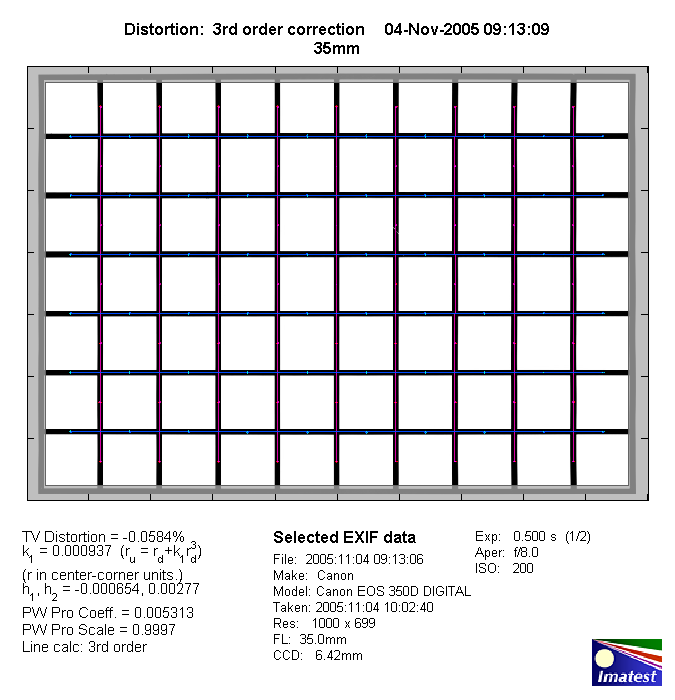|
Canon EF 16-35mm f/2.8 USM L - Review / Lab Test Report - Analysis |
|
Lens Reviews -
Canon EOS (APS-C)
|
|
Page 2 of 2

Distortion
The lens shows some very strong barrel distortion at 16mm easing
towards the long end (35mm) where the lens is basically free of distortion.
16mm:

24mm:

35mm:

As usual you should probably expect more distortions towards closer focus distances.
Vignetting
The EF 16-35mm f/2.8 USM L is a full frame lens so it can take advantage
of a sweet spot effect on APS-C DSLRs and vignetting is indeed on a very
low level here. Surprisingly it is a little more pronounced towards the long
end of the zoom range - possibly a side effect of the APS-C sensor crop.

MTF (resolution)
The lens exhibited a very good but slightly varying performance in the lab.
The center performance is excellent throughout the zoom range with a superb
peak at 24mm. Unfortunately the border quality isn't quite up to that level
specifically at large aperture settings at the wide and long end of the zoom range.
The extreme borders at 16mm (not shown in the graph below) suffered from
field curvature effects.
As usual the quality can be increased by stopping down resulting in very good
(16mm and 35mm) to even excellent (24mm) levels.
Two samples of the lens were tested during the recent months. The first
one tested in late '05 showed slightly better figures at 35mm and slightly
worse at 24mm. However, in the field the results were somewhat
sub-standard under certain conditions so the lab results were not taken
into account here despite a statement by the Canon Service that the lens
was within specs.
Please note that the MTF results are not directly comparable across the different systems!
Below is a simplified summary of the formal findings. The chart shows line widths per picture height (LW/PH) which can be taken as a measure for sharpness.
If you want to know more about the MTF50 figures you may check out the corresponding Imatest Explanations
Chromatic Aberrations
Similar to the resolution figures the chromatic aberrations
(color shadows at harsh contrast transitions) are in line with
what we've seen from other classic ultra-wide zooms. In absolute terms
CAs are quite high at 16mm and more so 24mm.

Verdict
The Canon EF 16-35mm f/2.8 USM L was able to produce a very good
performance in most aspects.
The center resolution of the lens is exceptionally high regardless
of the zoom and aperture settings. The border performance is lower
specifically towards the extreme ends of the zoom range and at large
aperture settings. At medium apertures the border performance
is one a very decent level. The sweet spot of the lens is clearly
at 24mm where it easily outperforms all tested Canon fix-focals to date.
Typical for most full frame lenses vignetting is no big issue on an
APS-C DSLR. The high barrel distortions at 16mm as well as CAs at 24mm
could be a little better.
The build quality of the lens is great and it is a joy to use.
All-in-all it is a very good lens but if you don't need the f/2.8
setting and that extra mm at the wide end you may as well save
quite some bucks by preferring the EF 17-40mm f/4 USM L which
performs basically just as good.
|